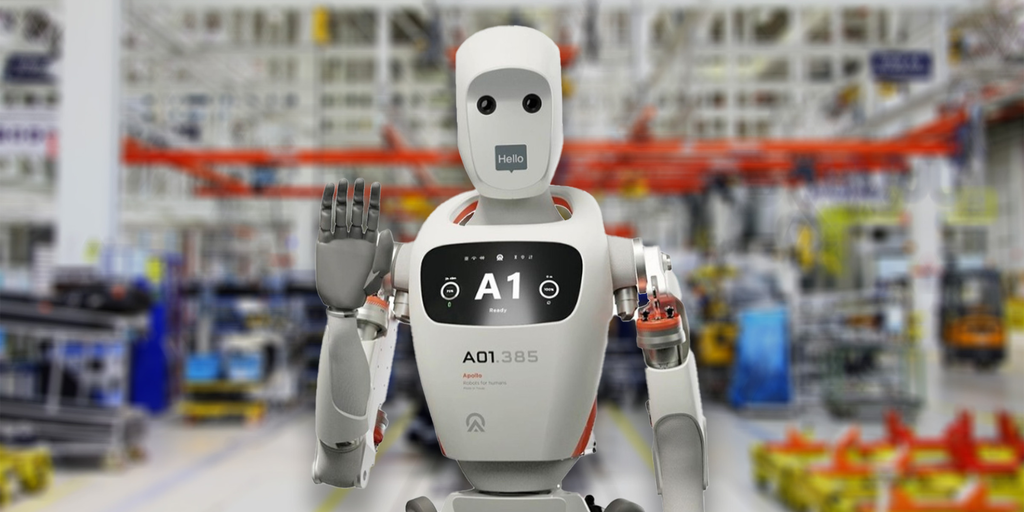German car manufacturer Mercedes-Benz has partnered with Austin-based AI developer Apptronik to infuse its factory robots with artificial intelligence, the companies said on Friday.
The deal with Mercedes-Benz is Apptronik’s first commercial contract to use its Apollo robots in the real world and automotive industry. The firm was spun out of the Human Centered Robotics Lab at the University of Texas at Austin in 2016.
“When we set out to build Apollo, an agreement like the one we're announcing today with Mercedes-Benz was a dream scenario,” Apollo co-founder and CEO Jeff Cardenas said in a statement.
Apollo's specifications fall squarely in the humanoid category—nearly six feet tall, weighs 160 lbs, and can lift up to 55 lbs. The robot has four hours of battery life, and can be mounted in a stationary position or given legs to walk. LED lights in Apollo’s head and chest allow the robot to communicate its status, such as charging and data processing.
Mercedes-Benz will use the Apollo robot to automate “low-skill, physically challenging, repetitive, manual labor,” Cardenas explained, calling it a model use case other organizations replicate in coming months and years.
Enlisting humanoid robots in factories allows companies like Mercedes-Benz to put robots to work in environments built for humans, eliminating the need to redesign the space.
As AI begins to infiltrate and disrupt a wide range of sectors, policymakers and ethicists alike are concerned about the emerging technology displacing workers—whether in knowledge-based fields or trades. Even if jobs are retained, AI may provide a pretext for employers to invest less in human resources.
For its part, Mercedez-Benz says the Apptronik partnership is a pilot to assess its possible impact.
“We are exploring new possibilities with the use of robotics to support our skilled workforce in manufacturing,” Mercedes-Benz board member Jörg Burzer said in a statement. “This is a new frontier, and we want to understand the potential both for robotics and automotive manufacturing.”
Apptroniks did not immediately respond to Decrypt’s request for comment.
Humans being replaced by machines in the workplace is an ongoing concern, with advances in artificial intelligence bringing the technology rapidly into the mainstream.
“A lot of the work that's going on right now—why people are investing in these companies like Figure—is that the hope is that these things can do work and be compatible,” UC Berkeley Industrial Engineering Professor Ken Goldberg told Decrypt.
While most of the focus has been on generative AI models like OpenAI’s ChatGPT and Anthropic’s Claude AI, humanoid robots powered by artificial intelligence are moving quickly toward center stage. While some may question the wisdom of building humanoid robots, Goldberg said there are many factors that will determine if they make sense. One example? Wheels versus legs.
“Wheels can be a problem in a home. Most homes have carpets and stairs, and that's where wheels really fall short,” Goldberg said. “And these legs could be useful in that kind of setting, and I think we're actually going to see something happen in the next decade.”
Many companies—including Hanson Robotics, Tesla, OpenAI-backed 1X, and Honda—continue to develop robots intended for mass production to work in hazardous environments like space and other worlds.
On Wednesday, Silicon Valley-based Figure AI unveiled its Figure 01 robot that uses OpenAI’s technology to independently hold conversations, identify food, and clean the area simultaneously.
Edited by Ryan Ozawa.





Comments are closed.